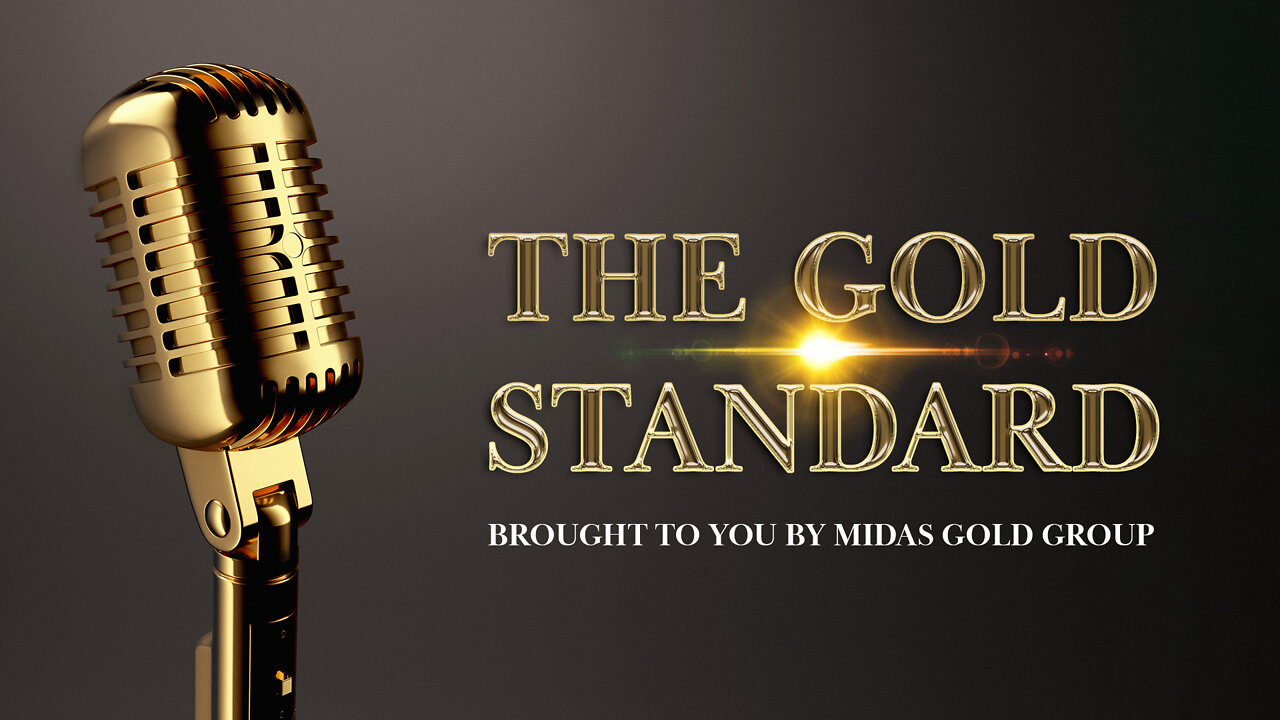Premium Only Content

Recession (part 1) | The Gold Standard #2216
https://www.midasgoldgroup.com/
Recession is a word that stirs feelings of fear and desperation. Even now, market experts forecast a possible downturn. Politicians and financial professionals lean over backward to avoid using “recession.” Recessions are brutal because companies struggle to survive, people lose their jobs, wages fall, homes and stocks lose value, and it inevitably leads to more debt. The excellent news about recessions is that they don’t last; however, retirement goes on for decades. Keep that in mind as Dave and Ken discuss the recession and how to protect your retirement plan before it’s gone.
What is Inflation?
We’ve all seen it in action. Just go to the grocery store to stock up your pantry or drive to your favorite gas station to fill up your gas tank, and you’ll notice everything is priced noticeably higher than a few months ago. That’s inflation, or as host, Ken Russo says in the episode, “Inflation is a general increase in prices and a fall in the purchasing price of our money.”
What is a Recession?
A recession is a period of temporary economic decline that reduces trade and industrial activity, generally identified by a fall in Gross Domestic Product (GDP) in two successive quarters. That’s another textbook definition. The reality of our current situation is that the country hasn’t had any real growth for a long time. Look at some of the catalysts that cause a recession and see if they sound familiar: excessive debt, asset bubbles, too much inflation, and sudden economic disturbances.
We’re living in the early stages of recession now. The powers that be don’t want to call it for what it is because they don’t want to cause a panic. But the proof is all around us. You don’t have to look too far. Investments in stocks and bonds are losing money. Even Netflix, with its upward trajectory, has turned around. The video streaming giant has begun to lose subscribers for the first time. Streaming services are not the only ones suffering setbacks. Emerging markets are facing their most significant financial challenges as well.
People are beginning to tighten their belts wherever they can. Like a school of Piranha eating a cow, rising inflation is devouring any savings you might have. Planning for a recession is scary because you must consider all the consequences. This program, indeed, this series, is all about steps you can start taking today to prepare for the unavoidable crisis that is quickly approaching.
The Dreaded Inverted Yield Curve
The economy of the United States is complex, and because some things are going on that affect the country’s economic health, many things can absorb shocks and supply pressures. The yield curve is the actual indicator of how painful things can get financially. Investors notice because they know an inverted yield curve announces a recession is coming.
The yield curve plots the yield, or market value, of a range of bonds. These are government-issued notes with a range of four months to thirty years. Under normal economic conditions, the yield is higher on longer-term bonds; however, when the “yields” are lower, investors know a recession is coming.
Only once did an inverted yield curve not signal a recession. In 1998, the yield on the 10-year Treasury fell below the line without an “economic downturn” following.
What’s the Difference Between a Recession and a Depression?
The Fed will do anything to avoid depression because its impact on the economy is worse than a recession. More people are out of work and can’t find replacement jobs. There’s an even steeper decline in GDP, and, perhaps worst of all, is a depression that lasts for years, not months. Economies struggle for a long time to recover. Fortunately, the US has only had one depression. The Great Depression lasted from 1929 to just before World War Two when President Roosevelt introduced the New Deal.
Featured Precious Metal Product
The Gold American Eagle, as host Dave Deno points out, is Ken’s favorite gold bullion coin and this episode’s featured precious metal bullion product. The American Gold Eagle hit the world bullion market like a meteor after President Reagan signed the Gold Bullion Coin Act of 1985.
The Gold American Eagle is a beautiful gold bullion coin that pays tribute to our national heritage. The obverse of the coin resurrects the iconic sculpture of Augustus Saint-Gaudens from the early twentieth century. The original Gold American Eagle reverse featured a Miley Busiek design of a female eagle tending her nest as a male eagle returns with a branch in its talons.
______________________________________________________________________________
Gold IRA: https://www.midasgoldgroup.com/gold-ira/
Invest in Gold: https://www.midasgoldgroup.com/buy-gold/
Guide to Owning Bullion & Coins: https://www.midasgoldgroup.com/bullion-guide/
Read the latest precious metals news: https://www.midasgoldgroup.com/news/
-
 25:06
25:06
Midas Gold Group
9 months agoThe Collapse of FERN (Federal Reserve Note) | The Gold Standard 2428
52 -
 LIVE
LIVE
Bannons War Room
2 months agoWarRoom Live
18,111 watching -
 LIVE
LIVE
Discover Crypto
1 hour ago$200K BITCOIN Happening: Nation-State ACCUMULATION Underway!
147 watching -
 2:37:20
2:37:20
Scammer Payback
20 hours agoCalling Scammers Live
2K -
 LIVE
LIVE
The Big Mig™
2 hours agoZelensky The Man With NO Cards To Play
4,880 watching -
 1:23:13
1:23:13
Dear America
2 hours agoUS Military IS BACK, Sees RECORD Numbers + Dem Rep. Calls For Outrageous Minimum Wage Increase!
55.8K22 -
 LIVE
LIVE
Badlands Media
4 hours agoBadlands Daily: April 24, 2025
4,905 watching -
![🔴[LIVE] Markets Whipsaw, Breaking News & Live Trading || The MK Show](https://1a-1791.com/video/fww1/09/s8/1/J/o/K/E/JoKEy.0kob-small-The-MK-Show-Apr.-24th.jpg) LIVE
LIVE
Matt Kohrs
10 hours ago🔴[LIVE] Markets Whipsaw, Breaking News & Live Trading || The MK Show
916 watching -
 LIVE
LIVE
Wendy Bell Radio
6 hours agoChanging Of The Guard
8,178 watching -
 1:03:22
1:03:22
2 MIKES LIVE
3 hours agoTHE MIKE SCHWARTZ SHOW with DR. MICHAEL J SCHWARTZ 04-24-2025
4.21K2